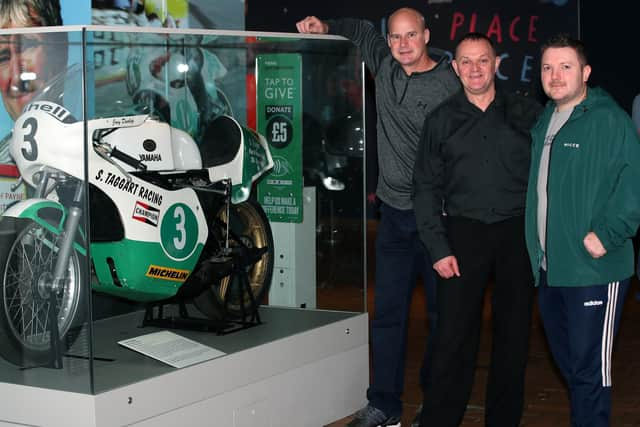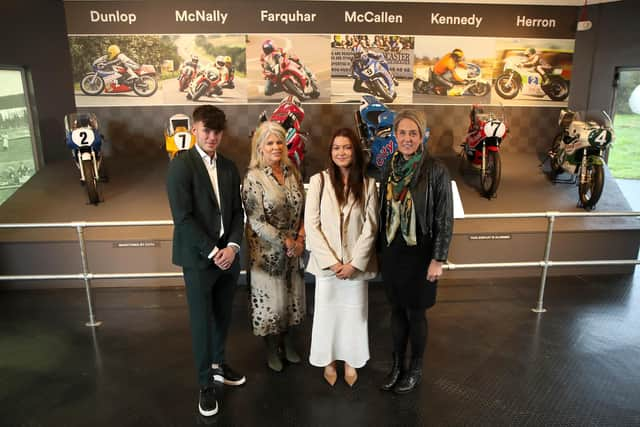Unique display of iconic road racing machines on show at Ulster Transport Museum includes ex-Joey Dunlop Yamaha
and live on Freeview channel 276
The exhibition has been made possible through support from the National Heritage Memorial Fund and the Department for Communities.
Owned and restored by late motorcycling enthusiast Ivor Skelton, the bikes are on show in the museum in the Driven Gallery, which has reopened to the public after closing for a short period over the summer in preparation for the new motorcycling display.
Advertisement
Hide AdAdvertisement
Hide AdThe machinery includes Ballymoney legend Joey’s 1978 Yamaha TZ250E and his brother and fellow Irish road racing great Robert’s 1986 Honda RS125.


A Yamaha R1 on which Portadown’s Phillip McCallen earned his final road racing success at the Tandragee 100 in 1999 before retiring is also part of the line-up along with a 1977 Spondon Yamaha TZ250 raced by Tom Herron.
Ryan Farquhar, the most successful Irish national road racer ever, is also represented with a McAdoo Suzuki GSX-R1000 Superbike, which he rode at the North West 200 in 2003.
Coleraine man Owen McNally’s RS125 Honda and a 1976 Maxton Yamaha TZ350 raced by Armoy Armada member Frank Kennedy will also be of great interest to fans of the sport.
Advertisement
Hide AdAdvertisement
Hide AdMr Skelton’s wife, Sharon, attended the opening of the gallery with Dungannon rider Farquhar, McCallen and Joey’s son Gary also in attendance.


She said: “I think Ivor would be proud to see these seven bikes on display in such a single impressive space that gives people a place to come and learn about the sport and the racers he loved so much.
“Not only do these bikes show Ivor’s passion for road racing, and so many like him, but they also serve to inspire the next generation of riders and trailblazers the way the museum can and position the importance of our sport to Northern Ireland both culturally and economically.”
Kathryn Thomson, Chief Executive of National Museums NI, said the collection of racing machines played an important role in celebrating the heritage of Irish road racing.
Advertisement
Hide AdAdvertisement
Hide Ad“We are incredibly grateful to the Skelton family, the Department for Communities and the National Heritage Memorial Fund for supporting us in bringing these iconic motorbikes into our transport collection,” she said.
“Road racing is a significant sport in Northern Ireland, we’re one of the few countries in the world that holds races on public roads, yet we did not have any examples of racing motorcycles in our collection – until now.
“Having these bikes in the Ulster Transport Museum not only allows us to share the achievements of our road racing greats with our visitors and the road racing fraternity near and far but also to connect audiences with our heritage, as the museum is a place to inspire the designers, engineers and adventurers of the future, so they too can leave a positive impact on Northern Ireland.”